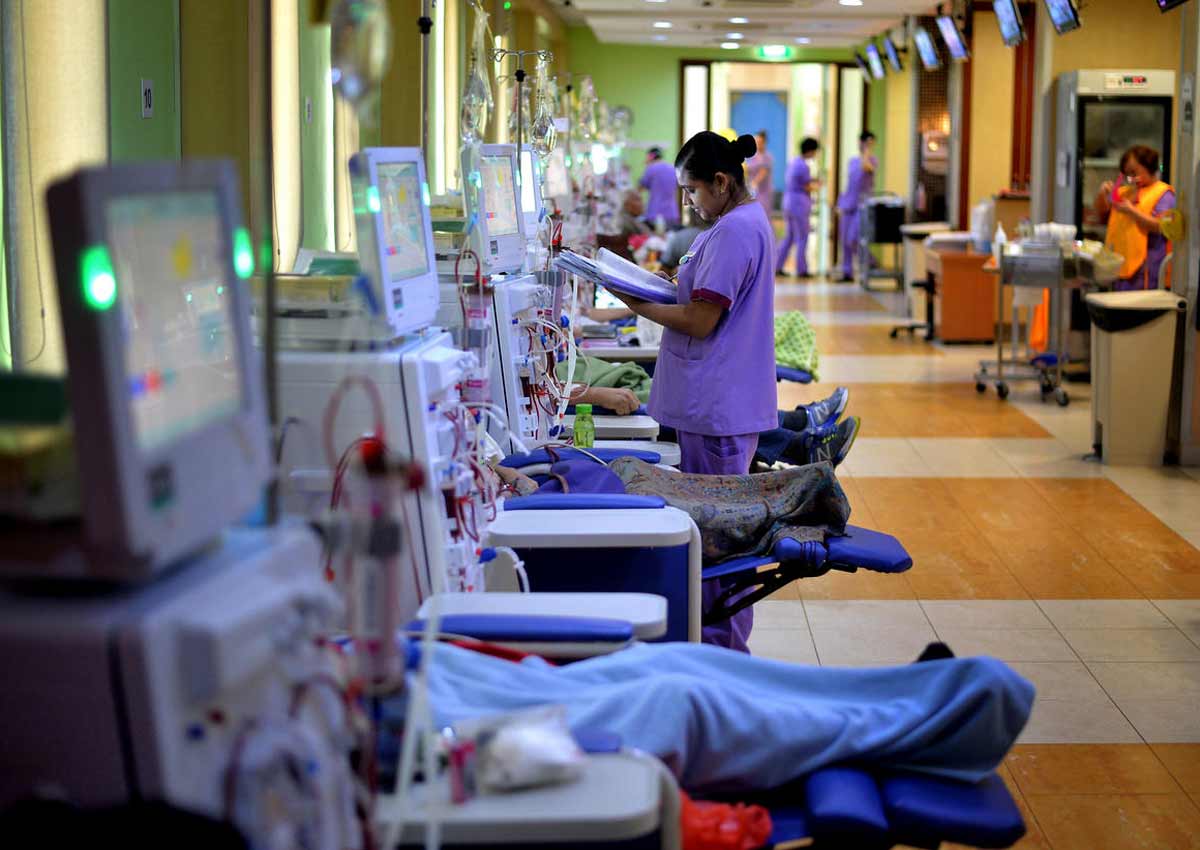About 1,300 patients will benefit from the opening of seven new National Kidney Foundation (NKF) dialysis centres across the island by 2020, including a mega dialysis centre in Jurong West.
The first of the seven new dialysis centres will open in Admiralty in September. This will be followed by facilities in Ubi in December and West Coast in January next year.
Jurong East, Toa Payoh and Marsiling will also have new dialysis centres. The opening dates for these will be confirmed later, said NKF yesterday. Meanwhile, construction on the Admiralty centre has started.
This comes as existing dialysis centres are running at almost full capacity. Last month, it was reported that Singapore’s three charity dialysis organisations had space for only 100 new dialysis patients, which would last until June or July.
NKF currently runs 31 dialysis centres catering to more than 4,000 patients with kidney failure – over two-thirds of the 6,000 patients in Singapore in 2015.
In March last year, the non-profit organisation announced a $12 million mega dialysis centre in Jurong West with a weekly capacity for 2,000 patients. In October, it said it would build a centre in the upgraded Toa Payoh West Community Centre by 2020, equipped with at least 20 dialysis machines.
“My wish is that no one will need to come to NKF (for dialysis). But that is not the reality,” said NKF chairman Koh Poh Tiong at the opening of the revamped Kidney Discovery Centre (KDC) yesterday.
But, he added, with a $1 million makeover for the KDC, the NKF is ramping up its education efforts to promote healthy lifestyles.
The revamped KDC has interactive exhibits on how the kidneys function, maintaining kidney health, symptoms and causes of kidney failure, and treatment options.
Since the centre in Kim Keat Road opened in 2011, it has seen about 30,000 visitors, including students from more than 150 schools.
The NKF hopes the refurbished centre will educate more working adults and elderly folk.
Since 2000, the number of new kidney failure cases has more than doubled, from 744 to 1,770 in 2015.

This article was first published on April 18, 2017.
Get a copy of The Straits Times or go to straitstimes.com for more stories.
























